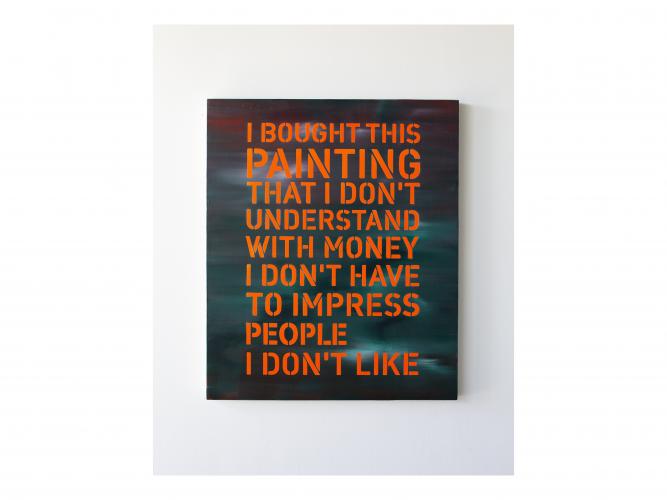Study
Acrylic and spray-paint on canvas, 45x30cm, 2018
In collaboration with an unknown painter
Private Collection, Switzerland
I bought this painting that I don’t understand with money I don’t have to impress people I don’t like
At first glance, the painting is the self-portrait of a hapless collector. It speaks in his/her voice and addresses the viewer, possible a guest whom the collector wants to impress with his art collection. The message is seemingly self-defeating. It builds on a triple negation and gives pitiless insight into the collector’s condition:
(S)he’s not bright enough to understand the work and its message, even if it is quite simple.
(S)he’s not rich enough to afford the work, even if it’s quite modest and therefore potentially cheap.
(S)he’s not socialised enough to have real friends and therefore has to show it to people that (s)he doesn’t like, in order to impress them.
However, at second glance, the work is self contra-dictionary in various ways, consisting of paradoxes. By displaying the work despite the insults it contains, the collector proves to be fearless and hints at the possibility that (s)he fully understands it. The fact that s)he owns it proves the s)he actually did have the money to buy it. Intellectual simplicity turns into wittiness, poverty into wealth. The final point, however, to impress people s)he doesn’t like remains possible. A collector who owns this painting must possibly be blessed with a healthy dose of sarcasm, which may not be too far from being a misanthrope.
Finally, if one is taking in consideration all of the above, one comes to the conclusion that the work can only be a humorous comment on the art world, and more specifically, on the art market.

